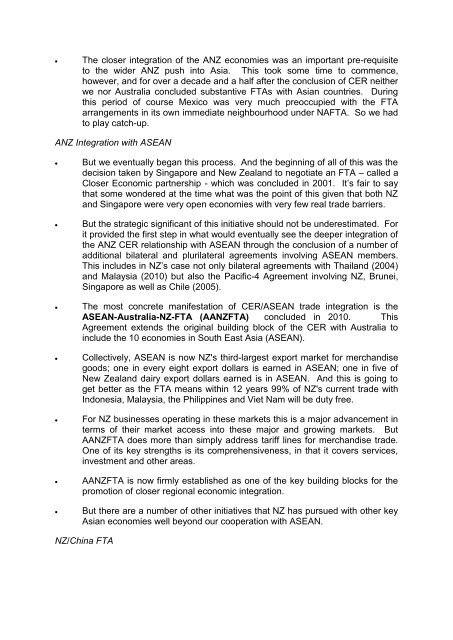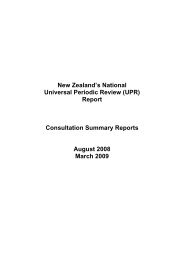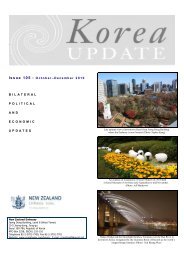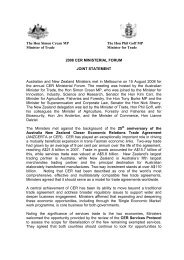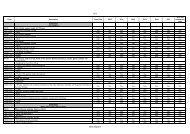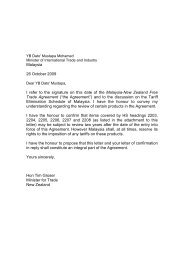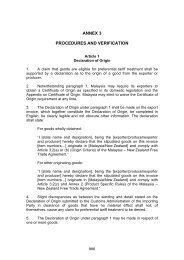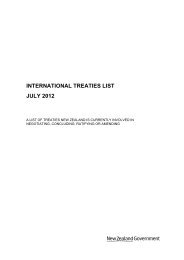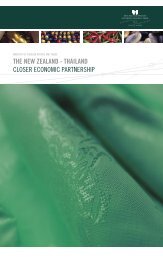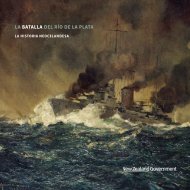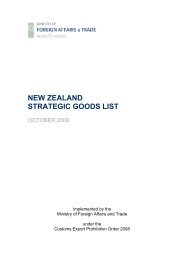Speech by John Adank, NZ
Speech by John Adank, NZ
Speech by John Adank, NZ
You also want an ePaper? Increase the reach of your titles
YUMPU automatically turns print PDFs into web optimized ePapers that Google loves.
� The closer integration of the A<strong>NZ</strong> economies was an important pre-requisite<br />
to the wider A<strong>NZ</strong> push into Asia. This took some time to commence,<br />
however, and for over a decade and a half after the conclusion of CER neither<br />
we nor Australia concluded substantive FTAs with Asian countries. During<br />
this period of course Mexico was very much preoccupied with the FTA<br />
arrangements in its own immediate neighbourhood under NAFTA. So we had<br />
to play catch-up.<br />
A<strong>NZ</strong> Integration with ASEAN<br />
� But we eventually began this process. And the beginning of all of this was the<br />
decision taken <strong>by</strong> Singapore and New Zealand to negotiate an FTA – called a<br />
Closer Economic partnership - which was concluded in 2001. It’s fair to say<br />
that some wondered at the time what was the point of this given that both <strong>NZ</strong><br />
and Singapore were very open economies with very few real trade barriers.<br />
� But the strategic significant of this initiative should not be underestimated. For<br />
it provided the first step in what would eventually see the deeper integration of<br />
the A<strong>NZ</strong> CER relationship with ASEAN through the conclusion of a number of<br />
additional bilateral and plurilateral agreements involving ASEAN members.<br />
This includes in <strong>NZ</strong>’s case not only bilateral agreements with Thailand (2004)<br />
and Malaysia (2010) but also the Pacific-4 Agreement involving <strong>NZ</strong>, Brunei,<br />
Singapore as well as Chile (2005).<br />
� The most concrete manifestation of CER/ASEAN trade integration is the<br />
ASEAN-Australia-<strong>NZ</strong>-FTA (AA<strong>NZ</strong>FTA) concluded in 2010. This<br />
Agreement extends the original building block of the CER with Australia to<br />
include the 10 economies in South East Asia (ASEAN).<br />
� Collectively, ASEAN is now <strong>NZ</strong>'s third-largest export market for merchandise<br />
goods; one in every eight export dollars is earned in ASEAN; one in five of<br />
New Zealand dairy export dollars earned is in ASEAN. And this is going to<br />
get better as the FTA means within 12 years 99% of <strong>NZ</strong>'s current trade with<br />
Indonesia, Malaysia, the Philippines and Viet Nam will be duty free.<br />
� For <strong>NZ</strong> businesses operating in these markets this is a major advancement in<br />
terms of their market access into these major and growing markets. But<br />
AA<strong>NZ</strong>FTA does more than simply address tariff lines for merchandise trade.<br />
One of its key strengths is its comprehensiveness, in that it covers services,<br />
investment and other areas.<br />
� AA<strong>NZ</strong>FTA is now firmly established as one of the key building blocks for the<br />
promotion of closer regional economic integration.<br />
� But there are a number of other initiatives that <strong>NZ</strong> has pursued with other key<br />
Asian economies well beyond our cooperation with ASEAN.<br />
<strong>NZ</strong>/China FTA


